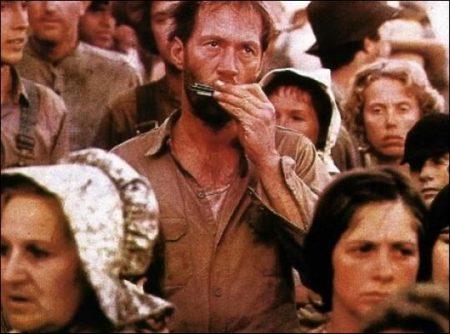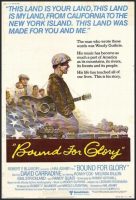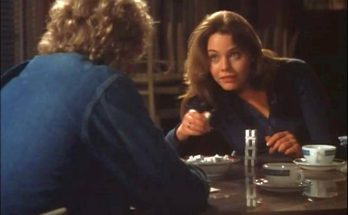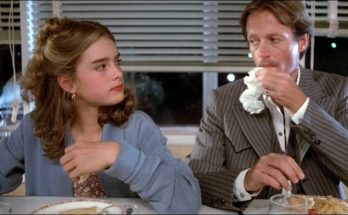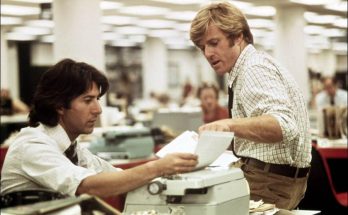Bound for Glory movie storyline. During the Great Depression in the 1930s, Midwesterner Guthrie (David Carradine) plays music locally but cannot make enough as a sign painter to support his wife (Melinda Dillon) and children. With only his paintbrushes, Woody joins the migration westward from the Dust Bowl to supposedly greener California pastures via boxcar and hitchhiking. Much of the film is based on Guthrie’s attempt to humanize the desperate Okie Dust Bowl refugees in California during the Great Depression.
Bound for Glory is a 1976 American film directed by Hal Ashby and loosely adapted by Robert Getchell from Woody Guthrie’s 1943 autobiography Bound for Glory. The film stars David Carradine as folk singer Woody Guthrie and Ronny Cox, Melinda Dillon, Gail Strickland, John Lehne, Ji-Tu Cumbuka and Randy Quaid.
Bound for Glory was the first motion picture in which inventor/operator Garrett Brown used his new Steadicam for filming moving scenes. Director of Photography Haskell Wexler won an Oscar for Best Cinematography (1976).
All of the main events and characters, except for Guthrie and his first wife, Mary, are entirely fictional. The film ends with Guthrie singing his most famous song, “God Blessed America” (subsequently retitled “This Land Is Your Land”), on his way to New York, but, in fact, the song was composed in New York in 1940 and forgotten by him until five years later.
Bound for Glory (1976)
Directed by: Hal Ashby
Starring: David Carradine, Ronny Cox, Melinda Dillon, Gail Strickland, John Lehne, Ji-Tu Cumbuka, Randy Quaid
Screenplay by: Robert Getchell
Production Design by: Michael D. Haller
Cinematography by: Haskell Wexler
Film Editing by: Pembroke J. Herring, Robert C. Jones
Costume Design by: William Ware Theiss
Set Decoration by: James L. Berkey
Art Direction by: James H. Spencer, Bill Sully
Distributed by: United Artists
Release Date: December 5, 1976
Visits: 51
